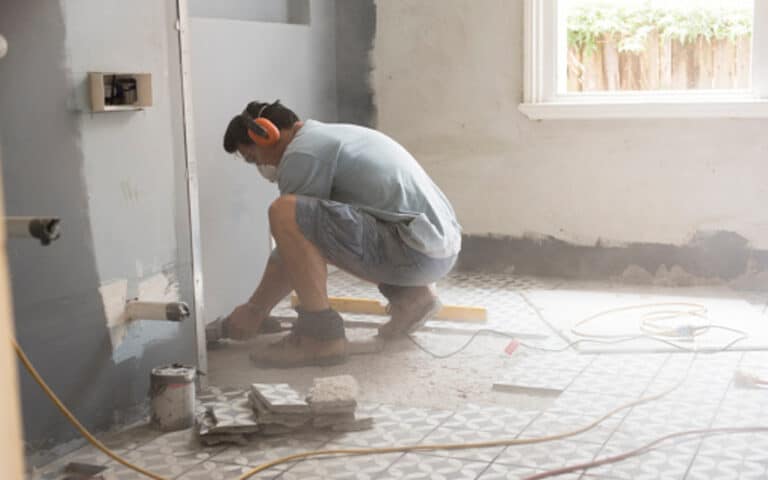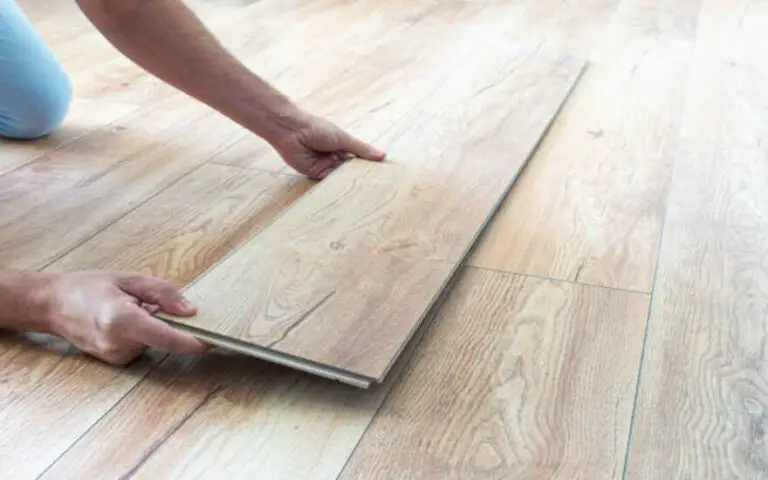Yes, you can replace the tub without removing the tile.
Although it’s a professional job, you’ll want to read this piece if you want to do it. Seven alternative approaches to tub replacement that don’t involve tearing up tile are compiled here. From installing bath liners to replacing the tub directly, I provide information that can help you save time and money on your bathroom makeover.
7 Different ways to replace the tub without removing the tile
Taking the time to plan and measure will ensure that the new tub fits perfectly into your space and that the tiles line up exactly. Once you have your measurements and plan, you can shop for the right tub and tile. Here are seven different methods to replace a tub without removing the tile:

1. Assess the Space
This includes measuring the size of the tub and the tiles, ensuring that the new tub will fit in the existing space, and ensuring that the new tub has the right connections for the plumbing.
Additionally, you’ll want to ensure that the new tub is compatible with the existing plumbing and will fit in the space without cutting into the wall or floor. Taking the time to plan your project carefully will help you avoid any costly surprises.
2. Measure the Tub and Tile
Having accurate measurements will help to ensure the replacement tub fits in the space properly.
Check the tile’s dimensions against the tub’s length, breadth, and depth. Make sure to measure any obstructions, such as pipes and walls, as these may restrict the size of the new tub. Once you have all the measurements, you can begin to plan the replacement.
3. Choose the Right Tub
Choosing the right tub for your space is a critical step in the replacement process. You want to ensure you get the best-fitting tub that meets your needs and style. When choosing a tub, you should consider the size, shape, material, and features needed for your bathroom.
You should also consider the cost of the tub and whether it will fit into your budget. It’s essential to measure the available space and ensure that your chosen tub will work properly. Consider any obstacles or existing features that might limit the size or type of tub you can choose. Once you’ve chosen the right tub, it’s time to move on to the next step.
4. Prepare the Area
Start by assessing the space to determine the size and shape of the new tub and the necessary materials. Measure the tub and tile to ensure accuracy in cutting and installation.
Choose the right tub for your space, considering size, shape, and material factors. Once you have all the necessary information, you can begin to prepare the area for the replacement. This includes removing the existing tub, preparing the space for the new one, and testing the new one to ensure it will fit in its designated area.
5. Install the Tub
Once you’ve chosen the right tub and measured the space, it’s time to install it. Before you can do that, however, you’ll need to prepare the area. This includes removing the existing tub, ensuring the floor is level and clearing away any old tile. Removing the existing tub is tricky, as it can be difficult to do without causing any damage to the tiles.
Using the right tools and techniques to do this safely and correctly is important. Be sure to use a hammer and chisel to carefully remove the old tub and any surrounding tiles. This will help minimize the risk of damaging the tiles and ensure a smooth installation.
6. Replace the Tile
When planning to replace your tub, it’s important to consider the available space and the type of tub best suited for the area. This means assessing the existing tile and wall surface and taking accurate measurements to ensure the right size tub is selected.
Once you’ve decided on a new tub, the existing tub will need to be removed and the space prepped for the installation. Fortunately, with the right preparation and materials, you can replace your tub without removing the tile.
7. Seal the Edges
Once you’ve installed the new tub, it’s time to seal the edges. This is an important step in replacing a tub without removing the tile. Sealing the edges helps prevent water seepage and prevents mold and mildew from forming.
It also helps keep the tiles in place and prevents them from cracking. To seal the edges, you will need to use a caulk or sealant designed for use in bathrooms. This sealant should be applied to the gap between the tub and the surrounding tile and given time to dry before continuing with the next step.
FAQ
Is it possible to remove a bath without damaging tiles?
Yes, it is possible. One of the best ways to remove a tub without causing any damage is to use a product called Tub and Tile Transformation by Rust-Oleum. This product is designed to resurface the tub without replacing it, allowing you to achieve a “new” look without draining your bank account. If you cannot find an exact fit for your opening, consider replacing the standard plate-glass window with a stained- or leaded-glass panel to obscure the view without blocking natural light.
Is it cheaper to replace the tub or convert it to a shower?
When it comes to replacing a tub, it can be difficult to decide whether it is cheaper to replace it or convert it to a shower. Replacing a bathtub can be very expensive, and it may not be the most cost-effective option if you want to change the look of your bathroom. Converting your bathtub into a shower may make your bathroom modern without breaking the bank. However, weighing your options before deciding which route is best for you is important.
How much does it cost to replace a bathtub with a shower?
Replacing a bathtub with a shower is a great way to update your bathroom, but it can be costly. Returning the bathtub depends on the size, material, and installation costs. Generally, a new bathtub and shower combo will cost between $800 and $2,000, but the price can be much higher depending on the type of fixtures and materials chosen.
Also, depending on the job’s hard, the labor to put in a new shower and tub combo can cost anywhere from $250 to $500. These expenses should be accounted for in your overall bathroom remodeling budget.
Summary
No matter what you decide, replacing a tub without removing tile can give your bathroom a fresh look. With the right preparation, planning, and installation, you can quickly and easily upgrade your bathroom in no time.


![How To Cut Laminate Flooring Lengthwise [Easy Guide] 3 How To Cut Laminate Flooring Lengthwise [Easy Guide]](https://homequeries.com/wp-content/uploads/2023/02/istockphoto-1162520121-612x612_880x550-768x480.jpg)



